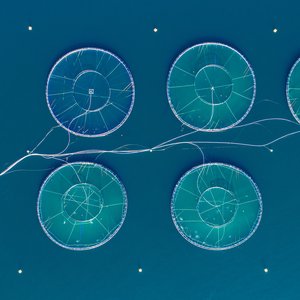IFFO, The Marine Ingredients Organization, and Peru’s National Fisheries Society (SNP) have developed a factsheet on the complex subject of the most appropriate use of Peruvian anchovy. The factsheet was developed as an aid to understanding the reasons why the market is the way it is.
The factsheet looks at Peru’s historic uses of fish, past initiatives and new projects to increase direct human consumption. It concludes by noting that after millions being spent by both the Government and the private sector, direct human consumption remains very low due to a lack of interest and uptake; but the use of anchovy in feed supports global protein production and is an extremely efficient way to contribute to global food security.
The factsheet highlights the following points on why direct human consumption is low:
- Peru’s fishery also has other more appealing species such as mackerel, jack mackerel and bonito, which are species that are just as affordable, much more palatable, and more versatile from a culinary point of view. Peruvian households prefer these species instead of anchovy.
- Anchovy are fragile fish that deteriorate quickly, limiting storage and transport options for the food market.
- Both industry and government have invested millions since the 1960s to increase direct human consumption of this resource, but the projects have had a limited impact despite the effort and money spent.
- Their distinct, strong flavour makes them relatively unpalatable; therefore, despite their promotion, they tend to be eaten in small quantities. According to anthropologists that have been consulted, it is more difficult to change people\'s eating habits than it is to change their religion.
- Using fishmeal and fish oil strategically in aquatic and animal diets produces many more volumes of more widely accepted and consumed fish and other animal protein in a more efficient way. These are products that actually have a strong direct consumption market.
- The volume of production of fishmeal and fish oil from Peruvian anchovy is equivalent to the requirement of 50% of the world’s fed farmed fish production, thereby having a significant positive impact on global food security.
Despite the reasons listed above, the Government and private sector continue to invest in new projects and products. In April 2017, the Peruvian Government implemented a US$120 million innovation project in the country\'s fishing and aquaculture industry, with funds obtained from the World Bank and the public budget. This project will finance initiatives related to increasing direct human consumption of anchovy. A new brand ‘Super Foods Peru’, launched at the 2017 Brussels Seafood Expo, has been developed by the Government to promote seafood exports of oily fish such as anchovies, mackerel and jack mackerel.
Aside from these initiatives, the amino acids of anchovy are being used to enrich different food, such as milk, orange juice and cooking oil. To further encourage this market, SNP has developed a program to find technological solutions to develop new products which will enrich mass consumption food with the essential fatty acids and micronutrients found in anchovies.
\"This exciting program will take a holistic approach, starting with improving the preservation of anchovy on board the fishing vessels, to the technological processes for obtaining the protein ingredients and the development of new products,\" stated SNP’s President Elena Conterno.
In conclusion, IFFO’s Andrew Mallison noted that “this case study challenges common misconceptions that the production of fishmeal and fish oil deprives local populations of a food source. Peruvian Anchovy is a well- managed fishery and has a vital role in the aquaculture industry, contributing to feeding the global population. Although efforts should always be made to ensure local communities benefit from local food sources, we need to remember that communities have preferences over the food they eat. If a surplus to direct human consumption needs exists, it is perfectly acceptable to convert this through use in animal feed, into other, more popular, types of protein.”










